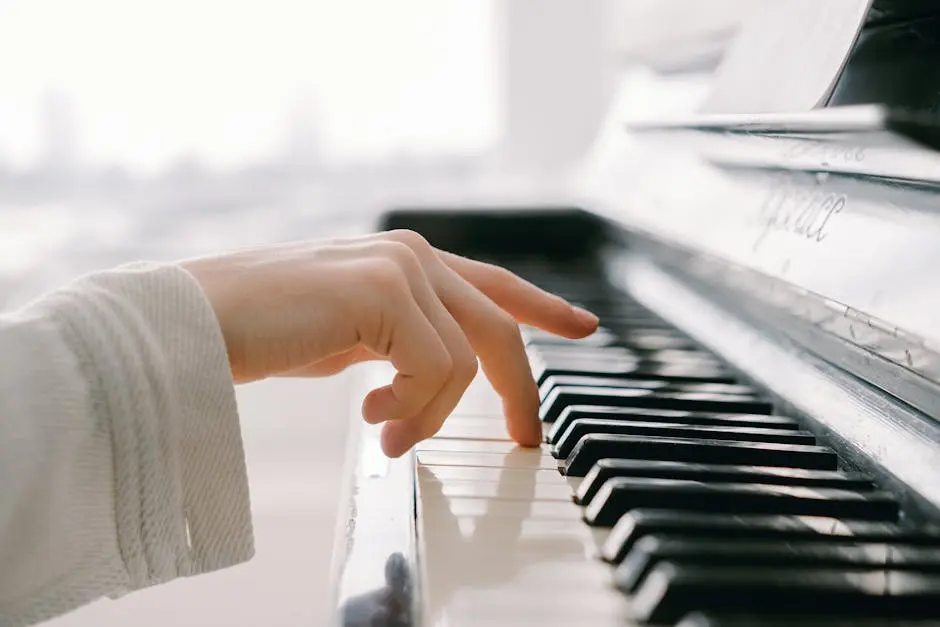Understanding the fundamentals of piano technique is essential for every aspiring pianist. In this guide, we'll explore key elements that make up a strong piano technique, enabling you to play with more confidence and skill.
Understanding Hand Position
>Learn the importance of proper hand placement on the keys and how it affects your playing.
Your hands serve as the bridge between your ideas and the instrument. By aligning your fingers correctly over the keys, you ensure that each note resonates clearly.
It's essential to keep your hands relaxed but firm while playing. Tension can lead to discomfort and hinder your performance. Practice finding that sweet spot where your hands feel natural.
To understand hand position better, consider practicing scales and simple pieces that require different placements. This will help in developing muscle memory, making it second nature as you move across the keyboard.
Fingering Techniques
>Explore efficient fingering strategies that promote agility and fluidity in your playing.
Effective fingering can transform your playing experience. By using the right fingers for specific notes, you enhance your speed and accuracy.
Practice scales and arpeggios using recommended fingerings. This can drastically improve your dexterity and help you navigate more complex pieces effortlessly.
Don't hesitate to experiment with fingering in various pieces. Sometimes a slight change can make a challenging passage feel more comfortable to play.
Posture Matters
>Discover how a good posture can prevent injuries and enhance your performance.
Your posture at the piano is crucial—not just for comfort, but for optimal playing. A straight back and relaxed shoulders allow you to reach the keys more easily.
Think about your seating position, too. Ensure that your bench height lets your elbows sit slightly above the keys. This position gives you better control while you play.
Remember, even as you play for extended periods, check in with your body. A few seconds taken to adjust your posture can make a big difference in your practice sessions.
Practice Routine Essentials
>Establishing a consistent practice routine is crucial for developing solid piano technique.
Think of practice as your time to cultivate skills. Start by setting achievable goals each session, aiming to balance between technical exercises and musical pieces.
Variety is essential in your practice. Incorporate warm-ups, sight-reading, and even some improvisation to keep things fresh. This not only enhances your technique but also fuels your passion for playing.
Consider tracking your practice time. Not only does this help you stay accountable, but it also allows for reflection on what works best for your learning style.
Listening and Adjusting
>Learn how to listen critically to your playing and make necessary adjustments.
Listening to your own playing is just as important as the act of playing itself. Record your sessions and listen back to identify areas needing improvement—this can be a game changer.
Being adaptable is vital. If something isn’t working, don’t hesitate to change your approach. Whether that means altering your fingering or spending more time on certain passages, adaptability can lead to breakthroughs.
Engagement with music extends beyond your practice sessions. Attend concerts, listen to piano recordings, and expose yourself to various styles. This will enrich your understanding of piano technique holistically.
Wrapping Up Your Piano Technique Journey
By focusing on these basics, you'll lay a solid foundation for your piano playing journey. Remember, practice is key, and with time, your technique will improve, leading to more enjoyable playing experiences.
You can start your music journey in music today at Matt Burk Music Studio with a Free Trial Lesson - https://mattburkmusicstudio.opus1.io/w/trial


